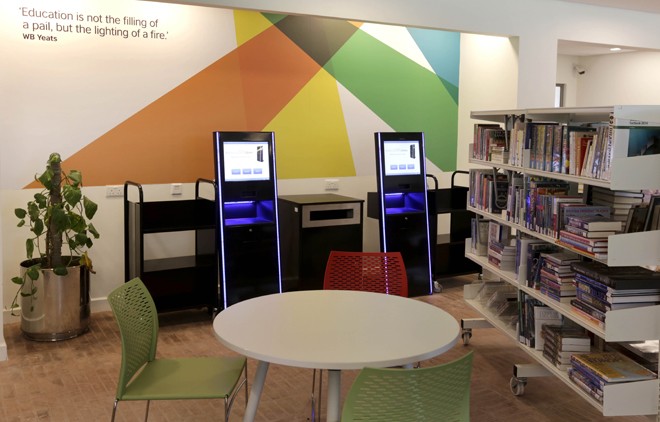
The new British Council library will take some time to match its former glory

The British Council Library was a favourite haunt of those students who were preparing for the Civil Services Exam or looking for opportunities to study abroad. The library was closed down after the region became a conflict zone in the post-9/11 world. And now after a hiatus of 13 years it reopens. Being a former member of this library, I decided to visit the institution again. This time, due to securitisation of everything, the visitor cannot just arrive. You have to book a tour online first, where you provide your personal details, your CNIC and phone number and institutional affiliation. The details are then provided to the team that welcomes you at the gate after you have gone through the security checks.
The new British Council library will take some time to match its former glory even though the re-vamped architecture is more environmentally friendly and the design is inspired by European post-industrial minimalism. The book racks on wheels can be re-arranged. The modern technology is at full display even though most of the computers are designed in the USA and manufactured in China. The staff is courteous but it is quite obvious that the entire venture is new and still in the process of coalescing into something substantial. The 10,500 books are available in their physical format and there are about 20,000 books in the online collection which is only for members.
The British Council Pakistan has a historical significance in the multicultural urban locations of Pakistan. It started working in 1948 and its aim was to disseminate British cultural products in the newly independent nation. Right next to the British Council Library used to be the American Centre Library, where I was able to see the movie on Malcolm X in the early 1990s, an era before the Internet. In those days, outside cultural products were not easily available. It did not mean the foreign workers at these two institutions were only busy in the North to South transfer of knowledge. We, as citizens of a multi-ethnic, multiracial, multi-religious country, also taught the expatriates working in these institutions quite a lot about the local realities. These places were part of a multiculturalism that included YMCA, YWCA, the Salvation Army hostel for tourists, and Pak Tea House.
In the early 90s, critical theory was an emerging discipline and a friend of mine spotted a call for applications on the notice board of the British Council Library and applied. It was one fully-funded postgraduate studentship only for Pakistani students interested in critical theory. He was the only one who applied and got admitted and went abroad. This was the function of the old British Council Library. There were no security checks. One could just drop in and hang around. Now it appears to be a post-9/11 space. To access books one has to go through the same checks which are performed before someone boards a flight.
There are plenty of areas where the experience of the newly (re)opened library can be improved. At the moment, the books are divided in two broad categories: fiction and non-fiction, which is perhaps a way of dividing literary and non-literary works or imaginative and analytical work.
Another area where the experience of the library can be improved is that the there should be a greater seating capacity for the patrons. At the moment, a group of 25 or 30 visitors can fill all the seats available. Pakistan is in dire need of multicultural experiences, of both local and global varieties, and the British Council and the American Centre should both be revived to their pre-9/11 capacity functionality again.
An important part of the British Council Library Lahore is the Manto Room which is for seminars and group discussions.
The library is a welcome addition to the cultural life of Lahore, which has always been all-inclusive. These institutions have been part of Lahore for decades and their revival may be announcing a better future for Pakistan.